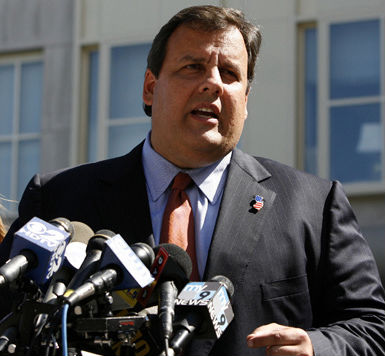
Leo Kolivakis is a blogger, trader and independent senior pension and investment analyst. This post was originally published at Pension Pulse.
Last week, Keith Leslie of the Globe and Mail reported, Wynne says Ontario may drop pension plan if Liberals win election:
Ontario Premier Kathleen Wynne suggested Tuesday that her government would drop the idea of a provincial pension plan if Liberal Leader Justin Trudeau becomes the next prime minister.
Wynne couldn’t convince the Harper government to enhance the Canada Pension Plan, so her Liberal government introduced an Ontario Retirement Pension Plan that would mirror the CPP, essentially doubling deductions and benefits.
If Trudeau wins the Oct. 19 election and is willing to improve the CPP, that would address her concerns about people without a workplace pension plan not having enough money to live on when they retire, said Wynne.
“If we have a partner in Justin Trudeau to sit down and work out what they’re looking at as an enhancement to CPP, that was always my starting point, that was the solution,” she said.
Trudeau is campaigning on a promise to expand the CPP and to return the age of eligibility for old age security to 65 from 67, and said he’d begin talks with the provinces on improving the CPP within three months of taking office.
New Democrat Leader Tom Mulcair also promises to enhance the CPP, and says he’d convene a First Ministers’ meeting on improving the pension plan within six months of forming government. Like the Liberals, the NDP would also return the age for OAS eligibility to 65.
Ontario’s pension plan, scheduled to begin Jan. 1, 2017, will require mandatory contributions of 1.9 per cent of pay from employers and a matching amount from workers — up to $1,643 a year — at any company that does not offer a pension.
As Wynne campaigned with federal Liberal candidates in the Toronto area Tuesday, she insisted she was not worried her attacks on Stephen Harper’s Conservatives will make it hard to work with them if they’re re-elected.
“Well, you know, it seems to me that before the federal election campaign started there was a little bit of a challenge working with Stephen Harper, but obviously I will continue to try to do that if Stephen Harper is the prime minister,” she said to cheers and laughter from Liberal supporters.
Wynne, who has been the most vocal premier in the federal campaign and has clashed repeatedly with Harper over the Ontario pension plan, said the provinces need a government in Ottawa that will work with them on retirement security, climate change, infrastructure and the Syrian refugee crisis.
“I will work with whomever is the prime minister, but I really believe that in this country, at this moment, we have an opportunity to elect a prime minister who understands that working with the provinces and territories is in the best interests of the country,” she said.
Ontario voters historically have supported different parties in government at the federal and provincial levels, but Wynne isn’t worried about campaigning herself out of a job in the next provincial election.
“I think the opportunity we have right now is to have a federal government and a provincial government that are on the same page, that are actually pulling in the same direction, and that’s exactly what I’m looking forward to,” she said.
Wynne also defended her decision to campaign heavily for her Liberal cousins in the federal election as “standing up for the people of Ontario,” and said she didn’t need to take a vacation day from her duties as premier to do it.
“I work seven days a week, so this is part of the work that I do.”
Well, Ontario Premier Kathleen Wynne can breathe a lot easier now that the Liberals have swept into power. After winning a decisive majority in a stunning comeback, Liberal Leader Justin Trudeau will turn his attention Tuesday to forming a cabinet and grappling with the host of urgent challenges that await him.
One of the biggest challenges that awaits Mr. Trudeau is the lackluster Canadian economy. Norman Mogil wrote a guest post for Sober Look on Canada and the oil price shock. In his excellent comment, Canada’s Recession Debate Misses the Point, Ted Carmichael notes the following:
The problem for politicians and policymakers is that the negative terms of trade shock comes from outside Canada, not from changes in the behaviour of domestic consumers, corporations or governments. The current terms of trade shock has many causes, including the development of new technologies that have lowered the cost of producing oil; the decision by Saudi Arabia and other OPEC countries to continue to pump oil at a high rate rather than cut production to support the oil price; and the slowdown in China’s economy which has lowered demand and prices for a broad range of commodities.
Whether or not the downturn in the global commodity super-cycle causes a business-cycle recession measured by GDP and employment is not the most important issue. The most important point to grasp is that Canada is facing a period in which the combined real income of households, corporations and governments are declining and are unlikely to rebound quickly. Even if real GDP resumes growing in the second half of 2015 and employment continues to rise, we will be producing and working more but receiving less real income for our efforts.
What the Economic Debate Should be About
The real economic issue that politicians should be facing is not whether Canada has slipped into a modest business cycle recession, but rather what is the appropriate economic policy response to a lasting negative shock to our national income caused by the fall in the prices of the commodities that we produce.
The Conservative Party wants to stay the course, keeping taxes low, encouraging home-ownership, and pursuing a balanced budget. That is a reasonable start, but does not go far enough in providing incentives to boost growth outside the resource industries.
The Liberal Party wants to raise taxes on high income earners including high-income small business owners, reshuffle child benefits to favour the “middle class”, and incur deficits to fund infrastructure projects. The difficulty in this approach will be to maintain business confidence and to control deficit spending in an environment of weak GDP growth.
The New Democratic Party (NDP) wants to raise corporate taxes, impose carbon taxes, expand government’s role in child care, and pursue a balanced budget. This is a difficult if not impossible set of promises to deliver on during a period of weak commodity prices.
The worst election outcome, but perhaps the most likely according to current polls, would be a coalition government of the NDP and Liberals. Coalition economic policies would likely result in higher taxes on high income earners, small businesses and corporations, increased spending on government provided child-care and infrastructure, and an early loss of control of budget deficits.
All three political parties and all Canadian voters would be well advised start thinking about what kind of pro-investment, pro-growth policies Canada needs to pursue in a period when the main economic engine and source of national prosperity has stalled and shifted into reverse.
Luckily, there is no coalition government of the NDP and Liberals. With a clear majority victory pretty much from coast to coast, the Liberals can implement the policies they have been arguing for.
This also means that the buck now stops with the Liberals their leader Justin Trudeau who will be under pressure to perform. And they better heed Ted Carmichael’s advice and really think hard about about what kind of pro-investment, pro-growth policies Canada needs to pursue in a very difficult global economic environment where deflationary headwinds are picking up steam.
My regular readers know my thoughts on the Canadian economy. I’ve been short Canada and the loonie for almost two years and I’ve steered clear of energy and commodity shares despite the fact that some investors are now betting big on a global recovery. I think the crisis is just beginning and our country is going to experience a deep and protracted recession. No matter what policies the Liberals implement, it will be tough fighting the global deflationary headwinds which will continue wreaking havoc on our energy and commodity sectors and also hurt our fragile real estate market. When the Canadian housing bubble bursts, it will be the final death knell that plunges us into a deep recession.
Having said this, I don’t want to be all doom and gloom, after all, this blog is called Pension Pulse not Greater Fool or Zero Hedge. I’d like to take some time to discuss why I think the new Liberal government will be implementing some very important changes to our retirement system, ones that will hopefully benefit us all over the very long run regardless of whether the economy experiences a very rough patch ahead.
Unlike the Conservatives led by Stephen Harper who was constantly pandering to Canada’s financial services industry, ignoring the brutal truth on DC plans, both the Liberals and the NDP were clear that they want to enhance the CPP for all Canadians, a retirement policy which will curb pension poverty and enhance our economy providing it with solid long-term benefits.
Of course, as always, the devil is in the details. Even though I agree with the thrust of this retirement policy, I don’t agree with the Liberals and NDP that the retirement age needs to be scaled back to 65 from 67. Why? Because Canadians are living longer and this will introduce more longevity risk to Canada’s pension plan.
But longevity risk isn’t my main concern with the Liberals’ retirement plan. What concerns me more is this notion of voluntary CPP enhancement. I’ve gotten into some heavy exchanges on this topic with Jean-Pierre Laporte, a lawyer who founded Integris, a firm that helps Canadians invest for their future using a smarter approach.
Jean-Pierre is a smart guy and one of the main architects of the Liberals’ retirement policy, but we fundamentally disagree on one point. As far as I’m concerned, in order for a retirement policy to be effective, it has to be mandatory. For me, any retirement policy which is voluntary is doomed to fail. Jean-Pierre feels otherwise and has even written on what forms of voluntary CPP enhancement he’s in favor of.
There are other problems with the Liberals’ retirement policy. I disagree with their stance on limiting the amount in tax-free savings accounts (TFSAs) because while most Canadians aren’t saving enough, TFSAs help a lot of professionals and others with no pensions who do manage to save for retirement (of course, TFSAs are no substitute to enhancing the CPP!).
More importantly, Bernard Dussault, Canada’s former Chief Actuary shared this with me:
“Unfortunately, there is a major flaw in the Liberal Party of Canada’s resolution regarding an expansion of the Canada Pension Plan, which is that their proposal would exclude from coverage the first $30,000 of employment earnings.
Indeed, although the LPC’s proposal would well address the second more important goal of a pension plan, which is to optimize the maintenance into retirement of the pre-retirement standard of living, it would completely fail to address the first most important goal of a pension plan, which is to alleviate poverty among Canadian seniors.”
I thank Bernard for sharing his thoughts with my readers and take his criticism very seriously.
Let me be crystal clear here. I don’t think the Liberals can afford to squander a golden opportunity and not introduce mandatory CPP enhancement for all Canadians. Anything short of this would be a historical travesty and it would dishonor Pierre-Elliott Trudeau’s legacy and set us back decades in terms of retirement and economic policy.
Why am I so passionate on this topic? Because I’ve worked at the National Bank, Caisse, PSP Investments, the Business Development Bank of Canada, Industry Canada and consulted the Treasury Board of Canada on the governance of the public service pension plan. I’ve seen first-hand the good, the bad and ugly across the private, public and quasi-public sector. I know what makes sense and what doesn’t when it comes to retirement policy which is why I was invited to speak on pensions at Parliament Hill and why the New York Times asked me to provide my thoughts on the U.S. public pension problem.
I’ve also put my neck on the line with this blog and have criticized and praised our largest public pension funds but one thing I know is that we need more defined-benefit plans covering all Canadians and we’ve got some of the very best public pensions in the world. Our top ten pensions are global trendsetters and they provide huge benefits to our economy. That’s why you’ll find a few pension fund heroes here in Canada.
Are the top ten Canadian pensions perfect? Of course not, far from it. I can recommend many changes to improve on their “world class governance” and make sure they’re not taking excessive and stupid risks like they did in the past. The media covers this up; I don’t and couldn’t care less if it pisses off the pension powers.
But when thinking of ‘real change’ to our retirement policy and economy, we can’t focus on past mistakes. We need to focus on what works and why building on the success of our defined-benefit plans makes sense for bolstering our retirement system, providing Canadians with a safe, secure pension they can count on for the rest of their life regardless of what happens to the company they work for.
In my ideal world, we wouldn’t have company pension plans. That’s right, no more Bell, Bombardier, CN or other company defined-benefit plans which are disappearing fast as companies look to offload retirement risk. The CPP would cover all Canadians regardless of where they work, we would enhance it and bolster its governance. The pension contributions can be managed by the CPPIB or we can follow the Swedish model and create several large “CPPIBs”. We would save huge on administrative costs and make sure everyone has a safe, secure pension they can count on for life.
But I understand why some people are concerned about enhancing the CPP now that the economy is weak. In fact, Ted Carmichael shared this with me after reading my comment:
“I agree with you on TFSAs. My concern is that in the lower commodity price environment that we find ourselves, the new government should be focused on creating a business environment that generates stronger private sector real income growth. The election campaign really saw none of the parties addressing this issue, but rather they focused how they would divide up the existing stagnant or shrinking pie. Increasing payroll taxes to fund future retirement benefits is a good long-term policy idea, but perhaps not the most important priority at the present point in the cycle.“
Ted is right, increasing payroll contributions is not the most important priority at the present point in the cycle but my fear is that the longer the federal government puts this off, the worse it will be down the road. And if the Liberals squander their majority and don’t implement major reforms to our retirement system, who will do it in the future?
Let me end this comment by congratulating our next prime minister, Justin Trudeau. Justin went to high school with my younger brother at Brébeuf. He wasn’t a top student but he worked hard and managed to do well in a brutal academic environment. He’s a very nice guy, a family man, and even though he’s relatively young and inexperienced, he’s smart and has a very experienced team backing him up.
I will also praise Stephen Harper and Tom Mulcair who lost but remained gracious. Politics is a thankless and tough job. I know, I saw my stepfather go through many ups and downs as he fought and won a few elections in the riding of Laurier-Dorion. Anyone who tells you politics is easy doesn’t have a clue of what they’re talking about, especially in the age of social media where public officials are scrutinized 24/7.
But now the tough work begins and I will do my part and help the Liberals introduce ‘real change’ to our retirement system, one that bolsters our economy. The challenges that lie ahead are huge but if they implement the right policies, they will hopefully mitigate the fallout from continued global economic weakness and meaningfully bolster our retirement system once and for all.
Photo credit: “Canada blank map” by Lokal_Profil image cut to remove USA by Paul Robinson – Vector map BlankMap-USA-states-Canada-provinces.svg.Modified by Lokal_Profil. Licensed under CC BY-SA 2.5 via Wikimedia Commons – http://commons.wikimedia.org/wiki/File:Canada_blank_map.svg#mediaviewer/File:Canada_blank_map.svg









